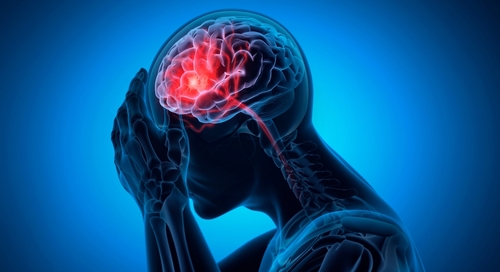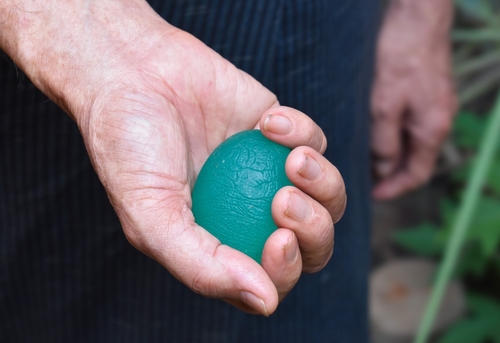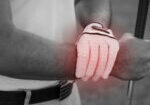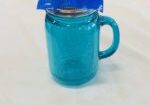Neurolutions IpsiHand to Aide in Stroke Rehabilitation in Patients with Hemiparesis
Filed under Treatments
Neurolutions IpsiHand to Aide in Stroke Rehabilitation in Patients with Hemiparesis
Hemiparesis occurs in approximately 77% of new stroke cases and often persists into the
chronic stage (Humphries et al., 2021). Recent innovation, such as brain-computer interfaces
(BCIs), offer new opportunities for motor recovery even years after stroke.

One such approach is the Neurolutions IpsiHand System, an FDA-cleared, at-home
rehabilitation device. The system uses electroencephalographic (EEG) signals from the
ipsilateral hemisphere to control a wearable exoskeleton handpiece on the impaired wrist and
hand. In practice, when an individual imagines opening their hand, the EEG headset detects this
activity, and the orthosis responds by physically opening the affected hand.
This system is designed to facilitate motor re-education and improve range of motion in
individuals over 18 years old with chronic stroke impairments. The IpsiHand System consists of
three components that work simultaneously to translate the cortical signals into movement of the
affected extremity: 1) a wireless motion-assist exoskeleton handpiece, 2) a non-invasive EEG
headset that detects the intention or thought to move the extremity, and 3) a tablet that delivers
guided sessions (with visual imaging) and visual feedback. Protocols in literature often involve
daily sessions 5 times per week for one hour, for 12 weeks total, during which are instructed to
mentally envision moving their affected hand and not physically move their hand themselves.
Rustamov et al., (2024) completed a study where the participants were guided to open
and close their orthosis in a 3-finger pinch grip. In response to changes in the power of the
control signal from the patient, the orthosis was able to open and close. Research found that the
use of IpsiHand System produced clinically significant improvements in both proximal and distal
upper extremity motor function in individuals with chronic stroke.

Recommending IpsiHand may be appropriate for clients who have reached a plateau with
traditional therapy but still demonstrate motivation and cognitive capacity for motor imagery
practice. It provides an at-home structured program that keeps individuals actively engaged
between therapy sessions and can help re-establish cortical connections that support upper
extremity usage. For occupational therapists, this technology may assist with traditional
intervention such as task-oriented training or constraint-induced movement therapy. Although
not yet widely available, understanding the mechanisms and therapeutic potential of IpsiHand
enables occupational therapists to advocate for its integration into holistic, client-centered stroke
rehabilitation.
References
Humphries, J. B., Mattos, D. J. S., Rutlin, J., Daniel, A. G. S., Rybczynski, K., Notestine, T.,
Shimony, J. S., Burton, H., Carter, A., & Leuthardt, E. C. (2022). Motor Network
Reorganization Induced in Chronic Stroke Patients with the Use of a Contralesionally-
Controlled Brain Computer Interface. Brain-Computer Interfaces, 9(3), 179–192.
https://doi.org/10.1080/2326263x.2022.2057757
Ipsihand. (n.d.). Neurolutions. https://www.neurolutions.com/ipsihand/
Rustamov, N., Souders, L., Sheehan, L., Carter, A., & Leuthardt, E. C. (2024). IpsiHand
Brain–Computer Interface Therapy Induces Broad Upper Extremity Motor Rehabilitation
in Chronic Stroke. Neurorehabilitation and Neural Repair.
https://doi.org/10.1177/15459683241287731
N.A. (2022). Newly Published Studies Show Motor Recovery in Chronic Stroke Patients –
Neurolutions. Neurolutions. https://www.neurolutions.com/news/newly-published-
studies-show-motor-recovery-in-chronic-stroke-patients
Neurolutions. (2021). Neurolutions Receives U.S. Food and Drug Administration De Novo
Market Authorization for IpsiHandTM Upper Extremity Rehabilitation System.
GlobeNewswire News Room; Neurolutions. https://www.globenewswire.com/news-
release/2021/04/26/2216682/0/en/Neurolutions-Receives-U-S-Food-and-Drug-
Administration-De-Novo-Market-Authorization-for-IpsiHand-Upper-Extremity-
Rehabilitation-System.html
More To Read
Splinting Options for Stiff Finger Joints
Following an injury to the proximal interphalangeal joint, there is often a loss of range of motion, typically in both the flexion and extension planes. Therefore, we have compiled a list of helpful splinting options for stiff finger joints. To Improve PIP Joint Flexion Flexion Wrap with Elastic Tape (Coban): This is a very easy…
Read MoreWhich is better for DeQuervain’s: Splinting or Injection?
Rapid Review Cavaleri, R., Schabrun, S. M., Te, M., & Chipchase, L. S. (2016). Hand therapy versus corticosteroid injections in de Quervain’s disease treatment: A systematic review and meta-analysis. Journal of hand therapy: official journal of the American Society of Hand Therapists, 29(1), 3–11. https://doi.org/10.1016/j.jht.2015.10.004 The Skinny: DeQuervain’s Tenosynovitis is a stenosing tenosynovial inflammation affecting the…
Read MoreArticle Review: Use of Paper Tape for Scars
Use of Paper Tape for Scars (What is scar tape?) O’Reilly, S, Crofton, E., Brown, J., Strong, J., & Ziviani, J. (2021). Use of tape for the management of hypertrophic scar development: A comprehensive review. Scars, Burns & Healing, 7, 1–17 DOI: 10.1177/20595131211029206 The Skinny The authors looked to do a review of the current literature…
Read More6 of our Favorite Adaptive Equipment Tools for CMC Osteoarthritis
Individuals struggling with osteoarthritis of the 1st CMC joint usually have difficulty with daily activities and it can become very frustrating. Everyday tasks such as cutting food, opening containers, and donning a button up shirt can become painful and slow. The largest contributor to the overall function of our hand is the thumb. If the…
Read MoreSign-up to Get Updates Straight to Your Inbox!
Sign up with us and we will send you regular blog posts on everything hand therapy, notices every time we upload new videos and tutorials, along with handout, protocols, and other useful information.






